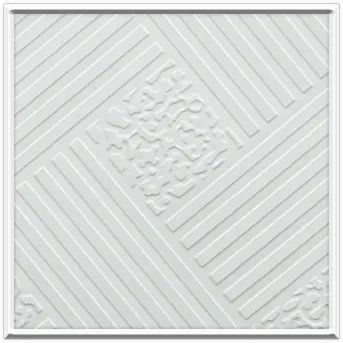- Afrikaans
- Albanian
- Amharic
- Arabic
- Armenian
- Azerbaijani
- Basque
- Belarusian
- Bengali
- Bosnian
- Bulgarian
- Catalan
- Cebuano
- Corsican
- Croatian
- Czech
- Danish
- Dutch
- English
- Esperanto
- Estonian
- French
- German
- Greek
- Hindi
- Indonesian
- irish
- Italian
- Japanese
- Korean
- Lao
- Malay
- Myanmar
- Norwegian
- Norwegian
- Polish
- Portuguese
- Romanian
- Russian
- Serbian
- Spanish
- Swedish
- Thai
- Turkish
- Ukrainian
- Uzbek
- Vietnamese
nov. . 06, 2024 17:23 Back to list
Stylish Ceiling Access Panels for Easy Maintenance and Aesthetic Appeal
Enhancing Spaces The Importance of Decorative Ceiling Access Panels
In modern architecture and design, the blend of functionality and aesthetics plays a crucial role in creating appealing environments. One often-overlooked element that offers both utility and style is the decorative ceiling access panel. These panels serve as vital components in building maintenance by providing convenient access to essential systems located above ceilings—such as electrical wiring, plumbing, and HVAC systems—while simultaneously complementing the interior décor.
The Functionality of Access Panels
Access panels have traditionally been utilitarian, designed solely to grant access to behind-the-scenes infrastructure. However, the evolution of design has led to the development of decorative options that allow for seamless integration into the overall aesthetic of any room. The primary purpose of these panels remains unchanged to provide maintenance access without compromising on the visual integrity of the space.
Whether in residential homes, commercial buildings, or public spaces, decorative access panels can be customized to suit a variety of design styles. They come in a range of materials, finishes, and sizes, allowing architects and designers to choose options that blend harmoniously with ceilings, walls, and overall interior themes.
Design Versatility
Decorative ceiling access panels are available in numerous styles, from modern and minimalist to ornate and classical. Some panels feature intricate designs that mimic the surrounding ceiling textures or patterns, making them virtually invisible. Others might incorporate bold colors or unique shapes to serve as design statements. This versatility helps homeowners and businesses reflect their personal style or brand identity while maintaining essential access points.
Moreover, many manufacturers offer custom branding options, which allow businesses to imprint their logos or distinctive designs on the access panels
. This thoughtful touch not only enhances the interior but also reinforces the brand image.Benefits Beyond Aesthetics
decorative ceiling access panel

In addition to their aesthetic appeal, decorative access panels provide several practical advantages. Firstly, they are designed for easy installation and accessibility, which simplifies maintenance for building managers. This convenience can lead to quicker response times in addressing any issues related to the infrastructure.
Secondly, using high-quality materials for decorative access panels contributes to their durability. Many panels are made from materials that are resistant to moisture, pests, and wear—ensuring that they not only look good but also stand the test of time. This longevity reduces the need for replacements, ultimately saving costs in the long run.
Improving Energy Efficiency
Well-placed access panels can also contribute to energy efficiency in a building. For example, if ducts or other systems are readily accessible, routine maintenance can ensure they operate effectively, reducing energy waste. Many decorative access panels come with insulation options as well, which can help in moderating temperatures in a building and lowering energy bills.
Ensuring Safety Compliance
Furthermore, using properly designed access panels can assist in maintaining safety compliance within buildings. Many areas, particularly commercial spaces, require regular inspections of electrical and plumbing systems. Aesthetically pleasing access points encourage adherence to maintenance schedules, ensuring that safety protocols are met without sacrificing the visual appeal of the environment.
Conclusion
In conclusion, decorative ceiling access panels are more than just functional objects; they are an essential part of modern design that beautifully marries aesthetics with utility. They allow for maintenance ease, enhance energy efficiency, and contribute to safety compliance while adding a unique touch to interiors. As architects and designers continue to prioritize the fusion of form and function, decorative access panels will undoubtedly play a significant role in shaping the future of built environments. Investing in these panels is a step towards creating attractive, efficient, and functional spaces suitable for a variety of applications.
-
Transform Interiors with PVC Gypsum Ceiling: A Stylish, Durable, and Moisture-Resistant SolutionNewsMay.19,2025
-
The Smart Interior Upgrade: Discover the Durability and Versatility of Gypsum Ceiling Access Panel SolutionsNewsMay.19,2025
-
The Smart Choice for Interior Design: Discover the Value of PVC Gypsum Ceiling SolutionsNewsMay.19,2025
-
Mineral Fiber Ceiling Tiles: The Smart Blend of Performance and AestheticsNewsMay.19,2025
-
Mineral Fiber Ceiling Tiles: The Superior Choice Over Gypsum for Sound and Fire SafetyNewsMay.19,2025
-
Mineral Fiber Ceiling Tiles: Eco-Friendly Strength and Style for Every CeilingNewsMay.19,2025







